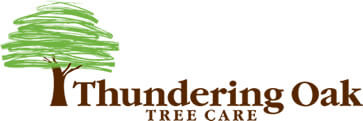Tree Pruning
Clarify Your Tree and Shrub Pruning Objectives
Establish your pruning objectives before you begin pruning, or hire someone to prune your trees and shrubs.
American National Standards Institute (ANSI) A300 provides two primary tree pruning objectives – hazard reduction and tree maintenance. Both types of pruning include the selective removal of tree branches.
- Hazard reduction pruning is recommended when the primary objective is to reduce the danger to a specific target caused by visibly defined hazards in a tree. For example, a tree has many dead limbs hanging over a home.
- Maintenance pruning is recommended when the primary objective is to maintain or improve tree health and structure and includes hazard reduction pruning.
A certified arborist understands tree biology to estimate how a particular tree will respond to pruning and can determine what pruning is needed to achieve the results you desire.
A certified arborist will evaluate your objectives, type of tree, and the tree’s health before beginning to prune. Alternatives can be discussed if the results you desire are not possible.
Popular Purposes For Tree Pruning
Crown cleaning: the selective removal of dead, dying, or diseased branches, weak branches, and watersprouts.
Crown raising: the removal of the lower branches of a tree to provide clearance.
Crown reduction or crown shaping: decreases the height and/or spread of a tree. Consideration should be given to the ability of a species to sustain this type of pruning.
Crown restoration pruning should improve the structure, form, and appearance of trees which have been severely topped, vandalized, or storm-damaged.
Crown thinning: the selective removal of branches to increase light penetration and air movement, and reduce weight.
Thinning: removing dead branches, removing crowded or rubbing limbs, eliminating hazards, and improving sunlight and air movement through the tree.
Tree topping (not recommended): the clumsy cutting off the top of a tree to stubs or smaller limbs. Usually, the objective is to reduce the size of a tree. This harmful practice will make a healthy tree more hazardous over time. Learn more about tree topping.
Vista pruning (windows): selective thinning of framework limbs or specific areas of the crown to allow a view of an object or scene from a predetermined point. It opens “windows” through trees for a view.
Put Your Trust in a Certified Arborist
Done properly and with an understanding of tree biology, tree pruning will maintain your tree’s health and structure. Tree pruning can also enhance the beauty and economic value of your landscaping.
Learn more about our tree pruning services or contact us today to learn more and schedule tree care services, 253-288-8733.
Vista pruning opens “windows” through trees for a view.
